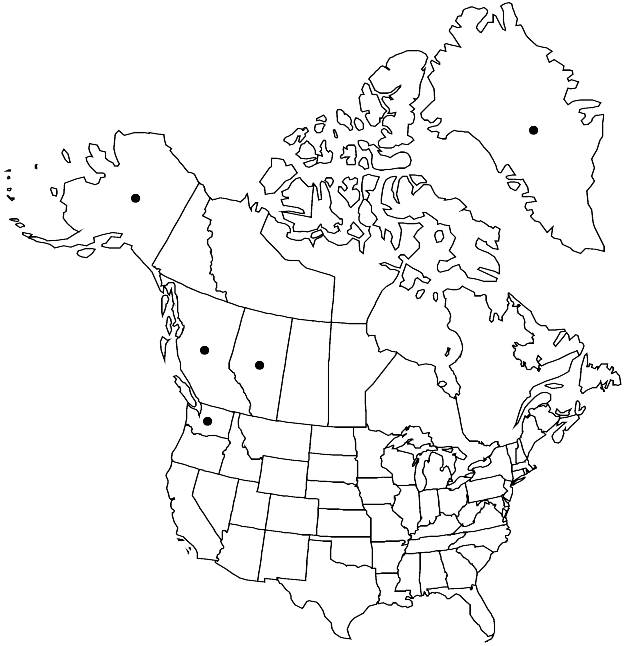Hypnum callichroum
Bryol. Univ. 2: 631. 1827.
Plants medium-sized, pale green to yellow-green. Stems 2–6 cm, yellow or green, procumbent to ascending, regularly to irregularly pinnate, branches 0.2–1 cm; hyalodermis present, central strand present; pseudoparaphyllia lanceolate. Stem-leaves falcate to circinate-secund, ovate to ovatelanceolate, somewhat curved to insertion, gradually narrowed to apex, 1.5–2 × 0.7–0.8 mm; base decurrent; margins plane, serrulate at apex; acumen slender; costa double and short or obscure; alar cells abruptly enlarged, region well defined, 1–3 cells high, outermost cell-walls thinner; basal laminal cells shorter, broader than medial cells, yellowish to green, walls porose; medial cells 50–60 × 8 µm. Sexual condition dioicous; inner perichaetial leaves oblong-lanceolate, margins toothed near apex, apex finely pointed, costa obscure. Seta redbrown, 2–3.5 cm. Capsule inclined, redbrown, cylindric, 1.5–2 mm; annulus 1-seriate or 2-seriate; operculum conic; endostome cilia appendiculate.
Phenology: Capsules mature Jun–Jul.
Habitat: Epiphytic or terrestrial, forests, open terrain
Elevation: low to moderate elevations (0-1500 m)
Distribution

Greenland, Alta., B.C., Alaska, Wash., Europe, Asia
Discussion
In North America, Hypnum callichroum is frequent only near the Pacific Coast, where it is relatively easy to determine; the shiny plants produce sporophytes in summer. The alar cells are bounded by quadrate to triangular cells distally. The presence of a hyalodermis and the distinct alar region of thin-walled cells that are strongly differentiated from the adjacent cells are reliable characters. However, material without sporophytes can be difficult to determine. Epiphytic specimens frequently have sporophytes, while terrestrial ones generally lack them.
Selected References
None.
